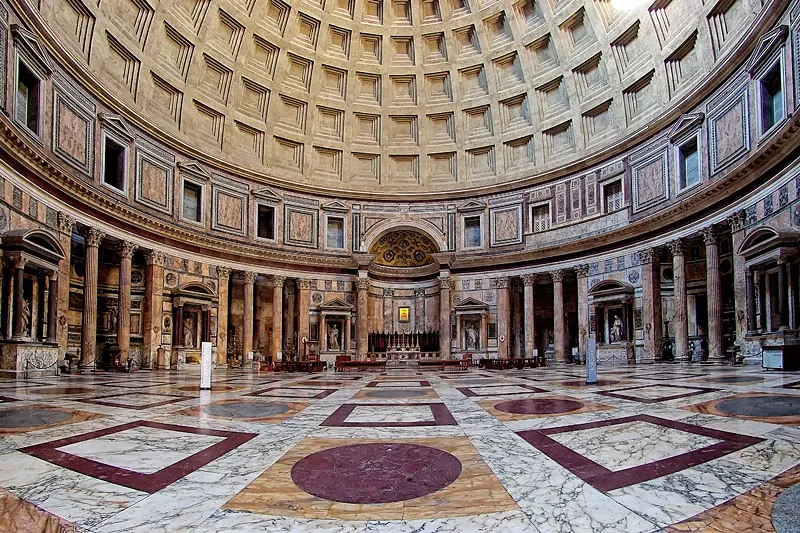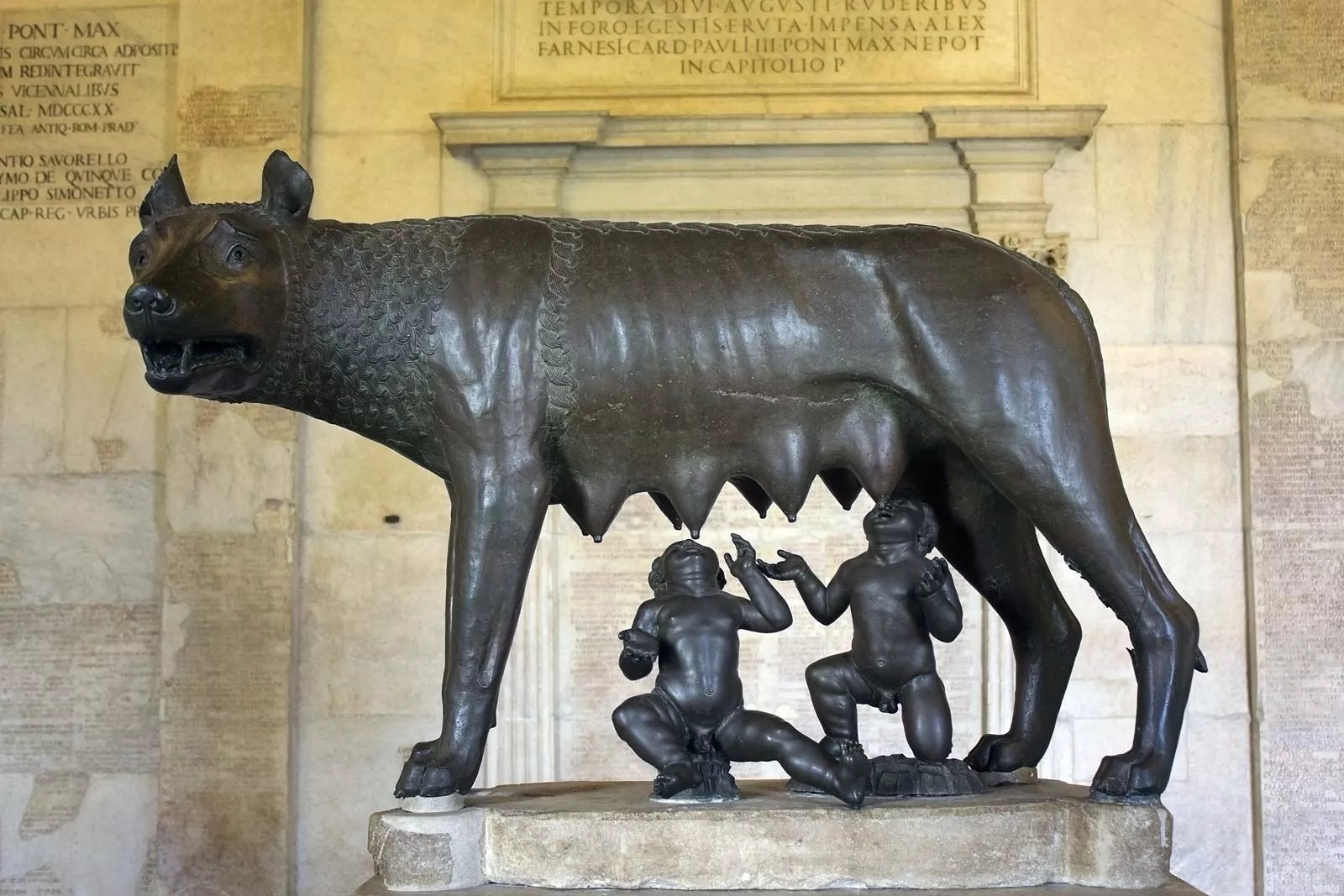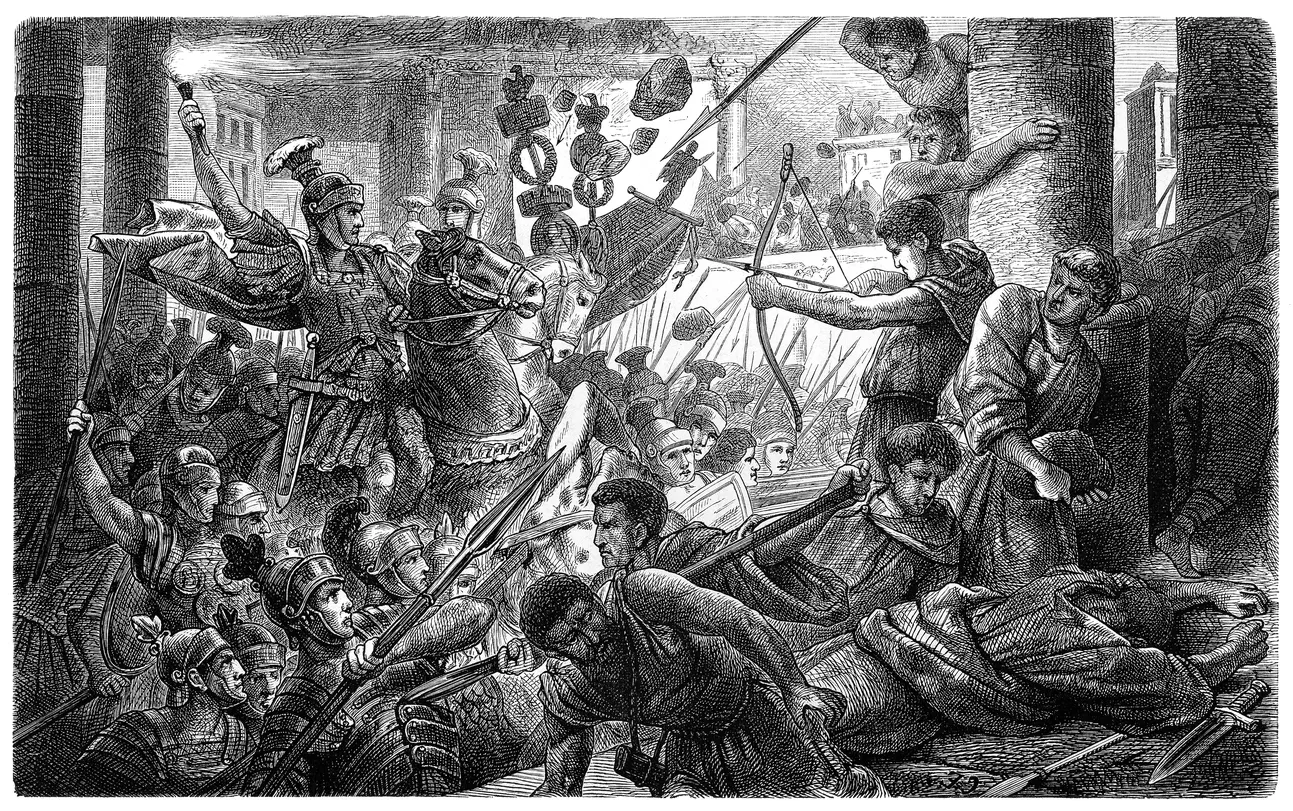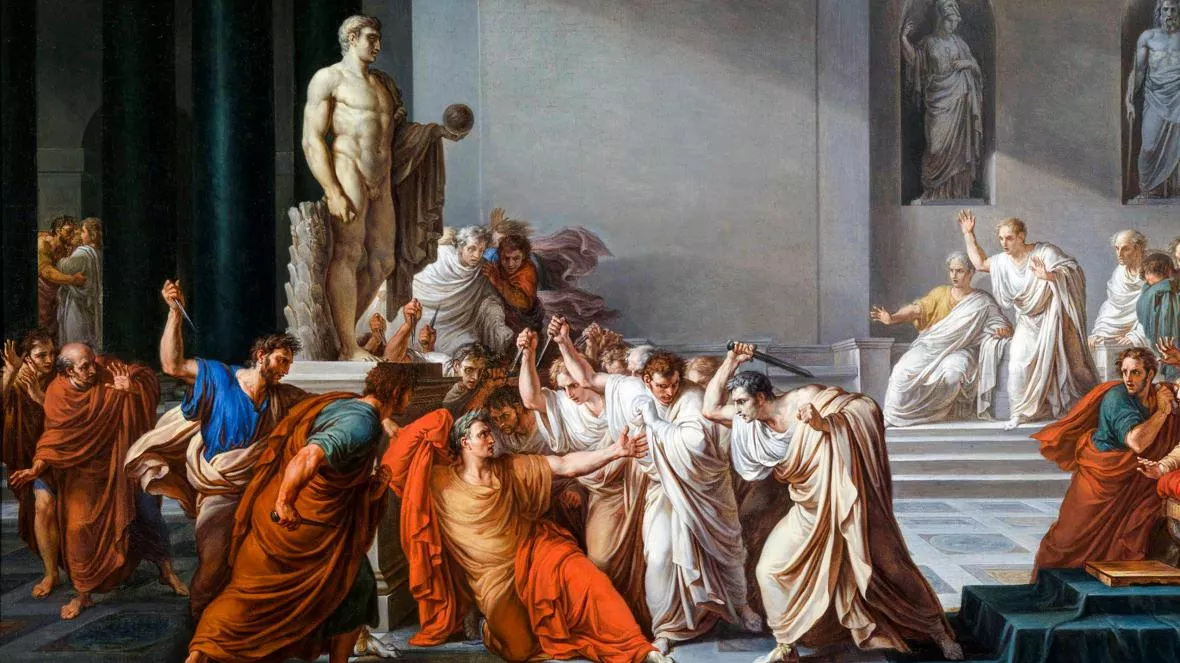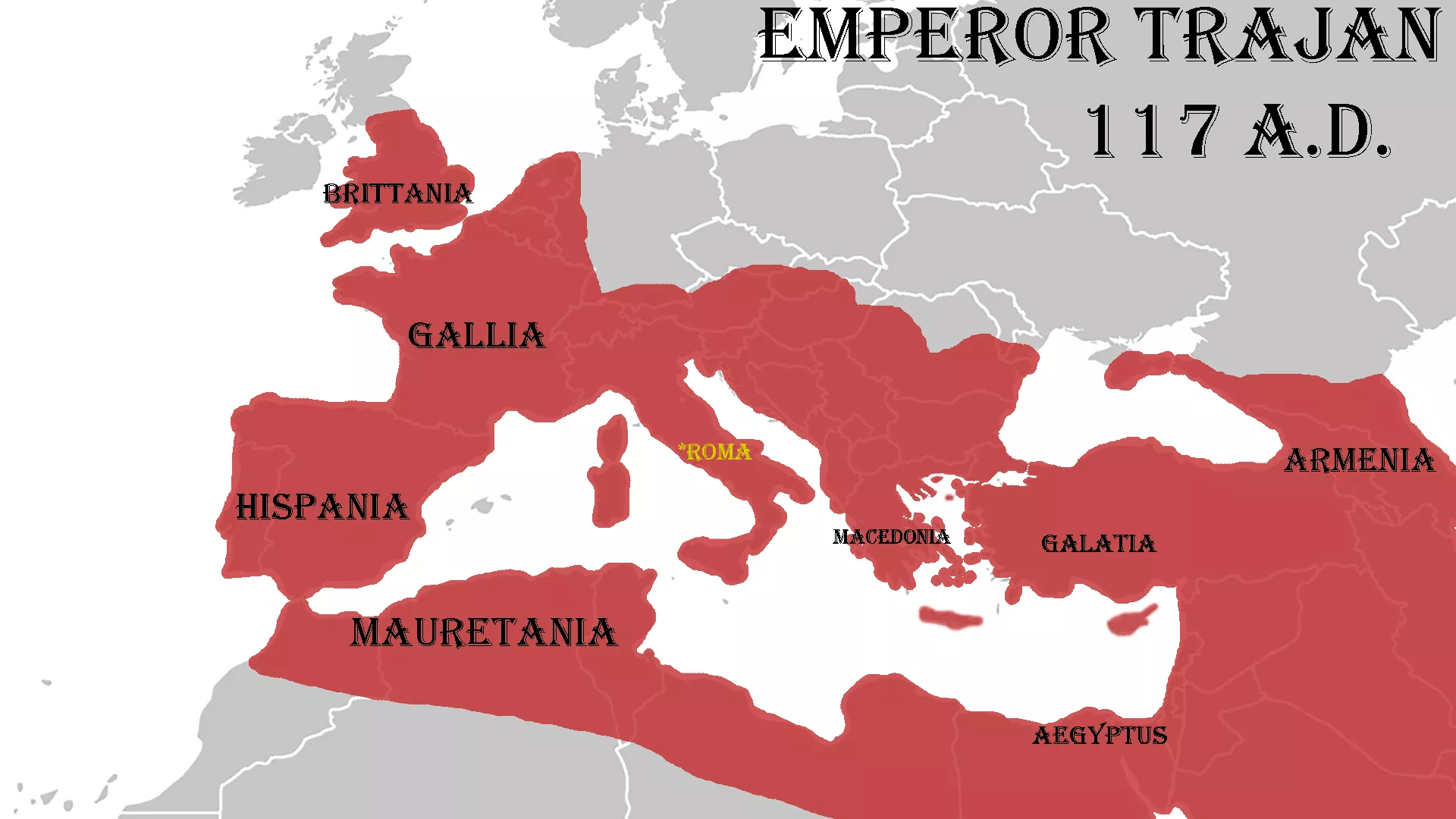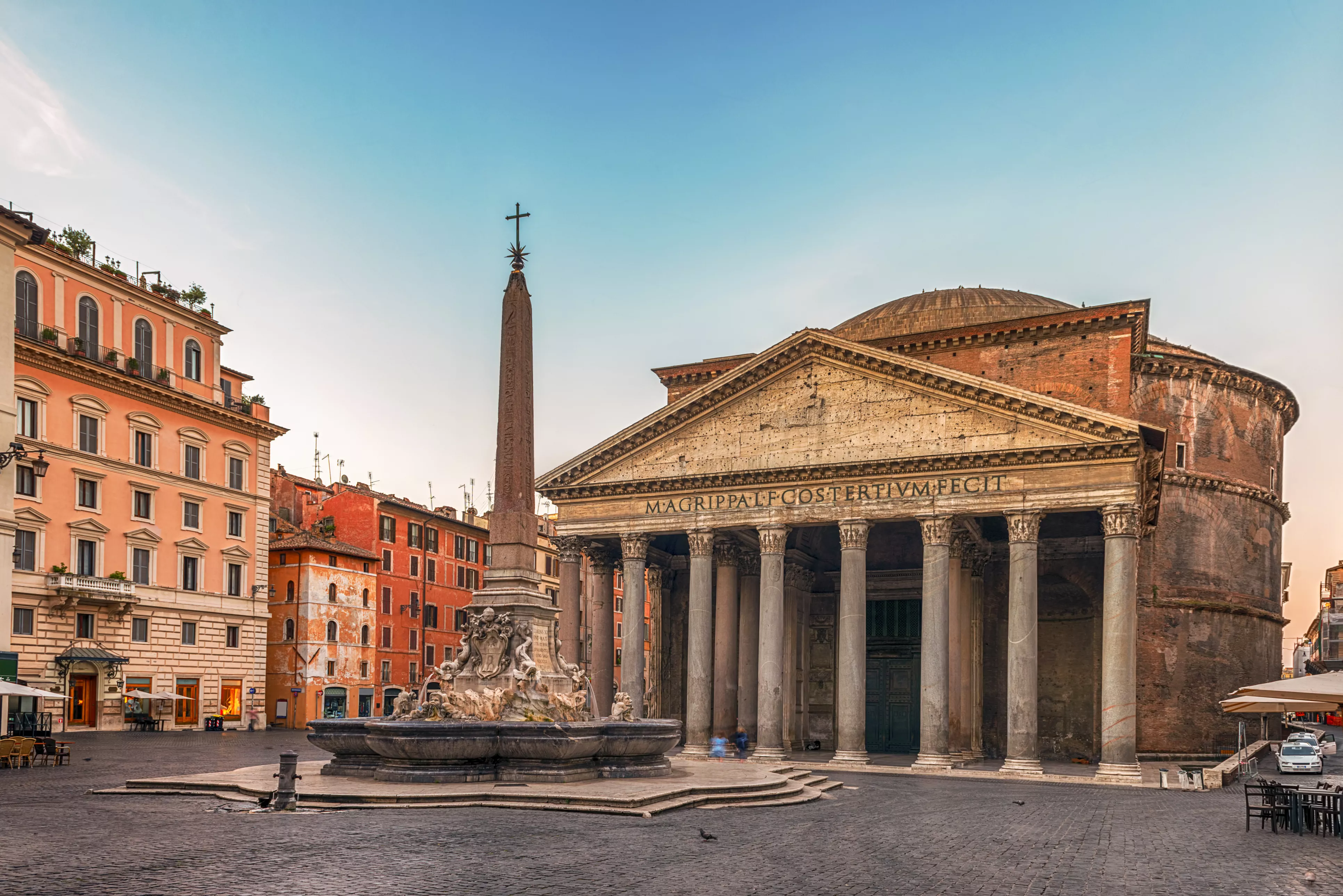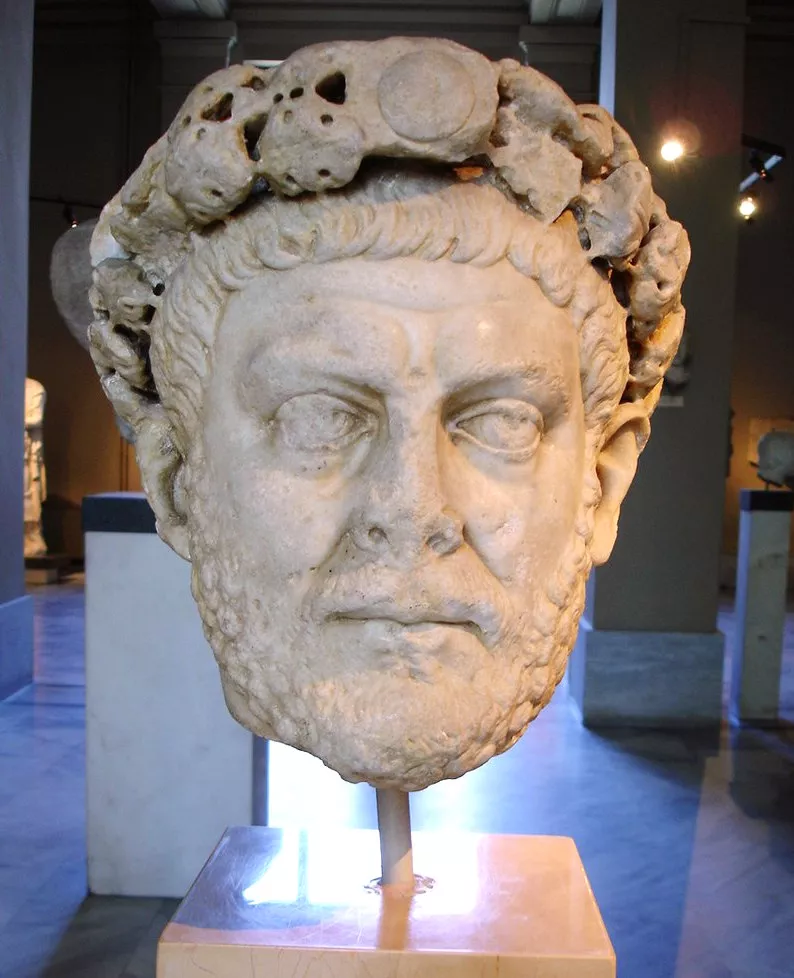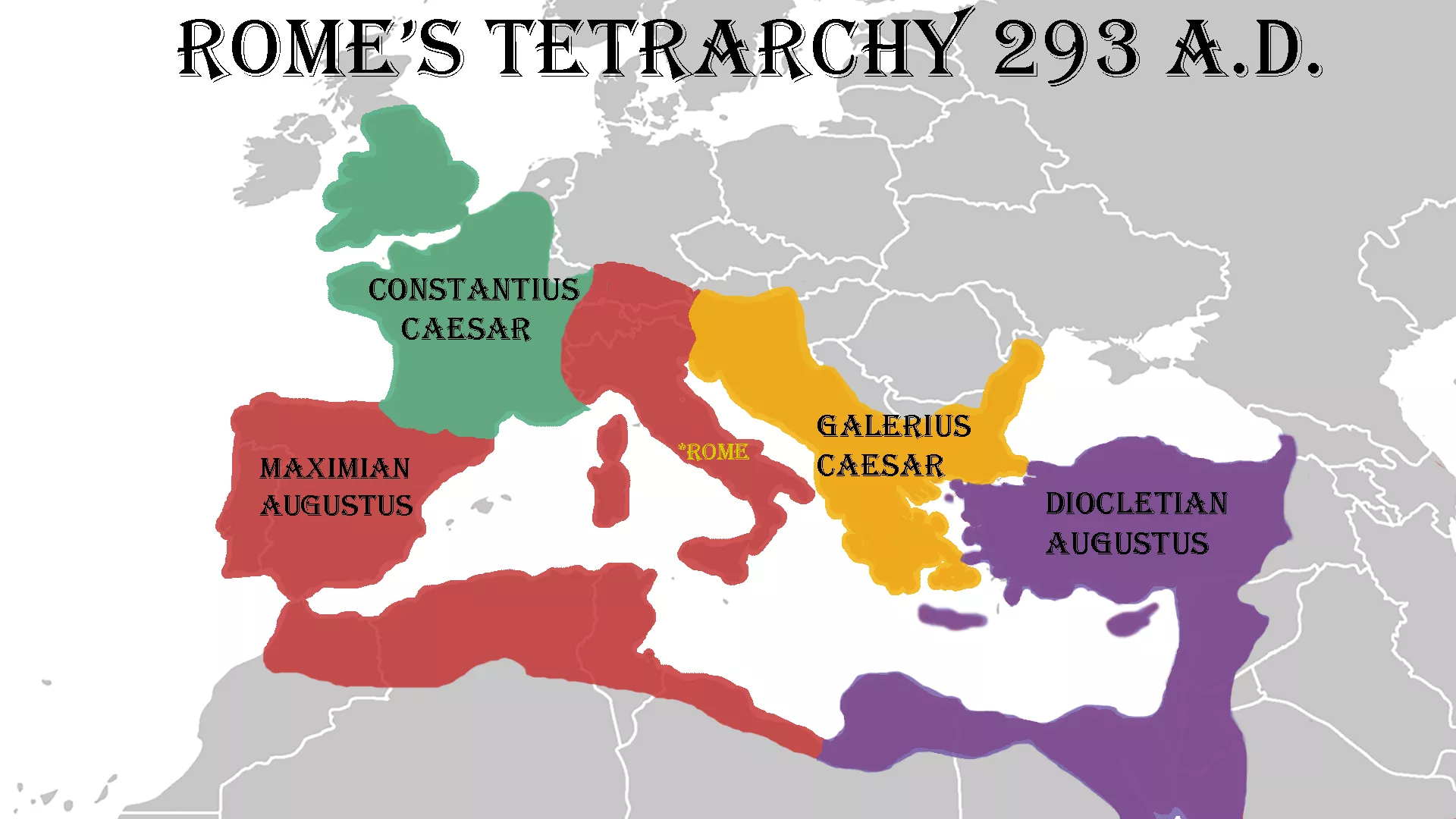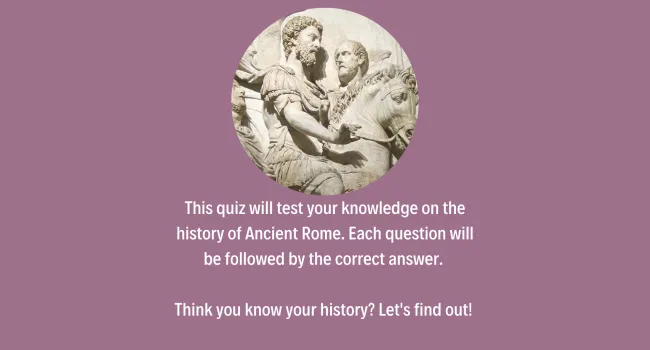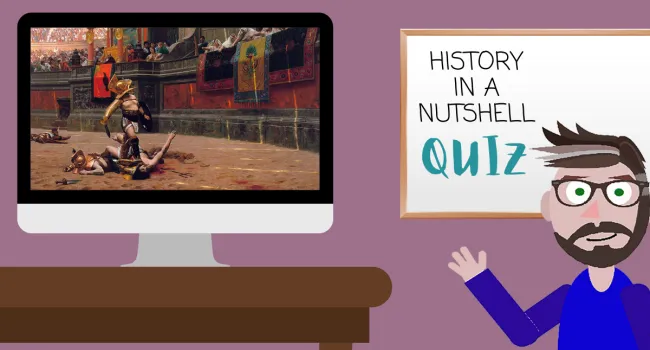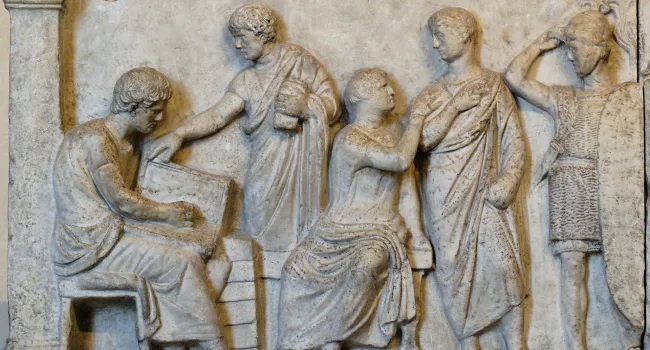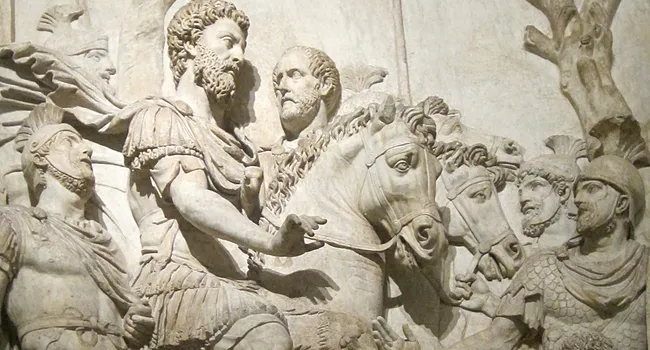Included in this photo gallery are the following:
- Interior of The Pantheon- Rome's best preserved monument
- The River Tiber
- Sculpture of Romulus and Remus- Raised by a she-wolf, according to Roman legend
- Romulus - The First King of Rome: 753 B.C.
- The Cloaca Maxima- Rome's first major construction project
- The Etruscans - heavily influenced Roman culture
- Tarquinius Superbus- The last Roman Monarch
- The Roman Senate - After the monarchy, the power transitioned to the people in the Roman Republic
- The Conflict of Orders- The lower class Plebeians struggled for years to gain the same rights as upper-class Patricians.
- The Twelve Tables- Served as basis for all Roman law.
- The legions of General Camillus drive the Gauls out of Rome in the 4th century B.C.
- The Punic Wars - lasted from 264 B.C. to 146 B.C. Here, the armies of Hannibal face off against the legions of Scipio Africanus, during the 2nd Punic War.
- Gaius Gracchus and Tiberius Gracchus- Two tribunes who tried to reform land legislation in favor of Plebeians.
- General Gaius Marius' military reforms revolutionized the Roman military, and transformed it into a standing army, ready to fight at any time.
- The dictatorship of Sulla plunged Rome into social and economic chaos.
- The First Triumvirate- Julius Caesar, Pompey, and Crassus
- Julius Caesar
- The Assassination of Julius Caesar- 15 March, 44 B.C.
- The Second Triumvirate- Octavian, Marc Antony, and Lepidus
- Marc Antony and Queen Cleopatra
- Marc Antony's Defeat by Octavian at the Battle of Actium - 31 B.C.
- Suicide of Cleopatra and Marc Antony
- Augustus Caesar- First Emperor of Rome, and ushered in the "Pax Romana"
- Tiberius Caesar
- Gaius Caesar Augustus Germanicus - Caligula
- Assassination of Caligula at the hands of the Praetorian Guard
- Emperor Claudius
- The Last Supper - The Christian religion emerged during the rule of Rome
- Emperor Nero- Last Caesar of the Julio-Claudian Dynasty
- The Great Fire of Rome - 60 A.D. Allegedly started by Nero to make room for ambitious construction projects
- Emperor Nero began the first major persecution of Christians, who got the blame for starting the Great Fire of Rome
- Emperor Vespasian Flavius- First Emperor of the Flavian Dynasty, who came to power after the tumultuous "Year of the Four Emperors" in 69 A.D.
- The Roman Colosseum- Commissioned under Vespasian in 72 A.D., it would not be finished until the reign of his son, Titus, in 80 A.D.
- Artist depiction of a Gladiatorial game in the Roman Colosseum
- The cities of Herculaneum and Pompeii were destroyed by the Mt. Vesuvius volcano eruption in 79 A.D.
- Emperor Trajan- One of the "Five Good Emperors", Rome reached its largest size under his rule in 117 A.D.
- Map of Rome's largest extent, under Emperor Trajan
- Emperor Hadrian- Another of the "Five Good Emperors", and known for building the wall in Britain, and the Pantheon in Rome
- Hadrian's Wall
- The Pantheon
- "The Philosopher King" Marcus Aurelius- The last of the "Five Good Emperors"
- Emperor Commodus- Plunged Rome into debt with his extravagant lifestyle and gladiatorial games
- Commodus, a notorious narcissist, was strangled to death by his gladiatorial partner while in the bath. Commodus' assassin was named Narcissus. Dramatic irony, or poetic justice?
- Emperor Diocletian- Known for splitting Rome into four parts under the Tetrarchy. He voluntarily retired from the throne to grow cabbages.
- Map of the Roman Empire under the rule of the Tetrarchs - 293 A.D.
- Sculpture of the Roman Tetrarchs
- Emperor Constantine The Great- Emerged victorious from the War of the Tetrarchs
- Emperor Constantine sees a vision of the Christian Cross just before a major battle
- Constantine heavily promoted the Christian religion, and put an end to years of Christian persecution.
- Emperor Theodosius I officially declared Christianity the state religion, and was the last Emperor of a fully united Roman Empire
- Near the end of Rome's history, Rome suffered constant attacks from barbarians, such as the Visigoths, and Attila the Hun, as shown here.
- The deposition of the last Western Roman Emperor, Romulus Augustus, by Odoacer in 476 A.D.
